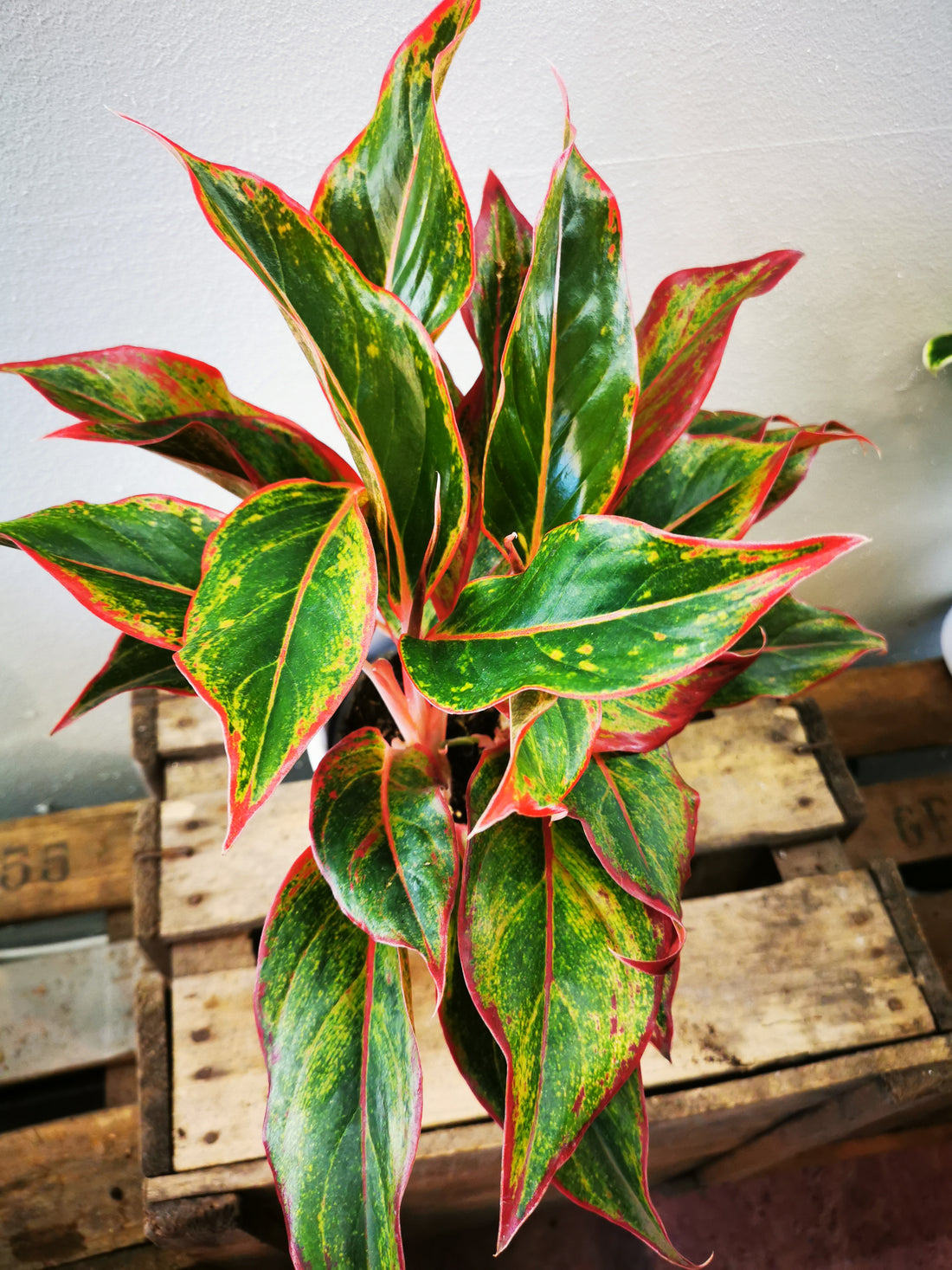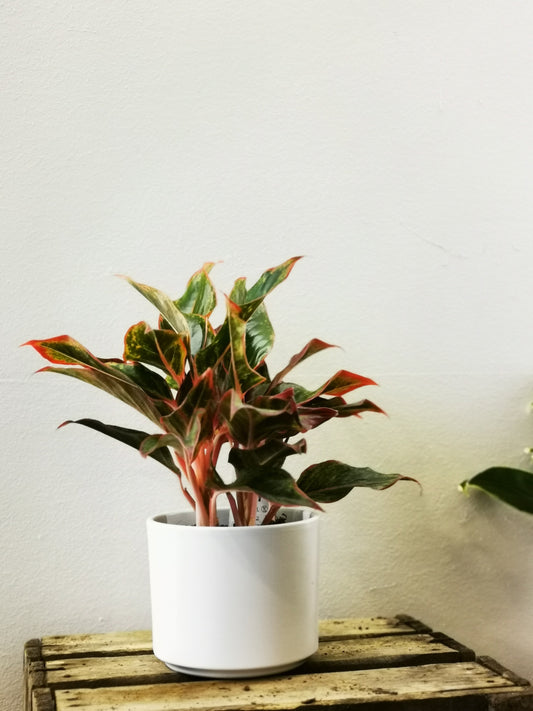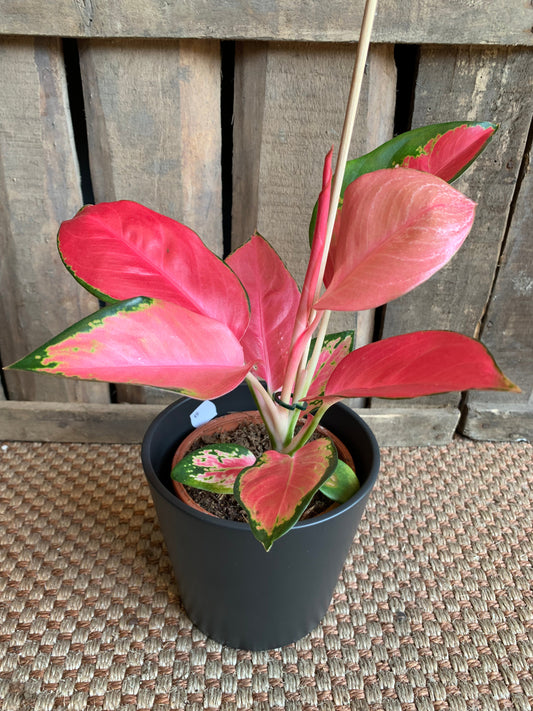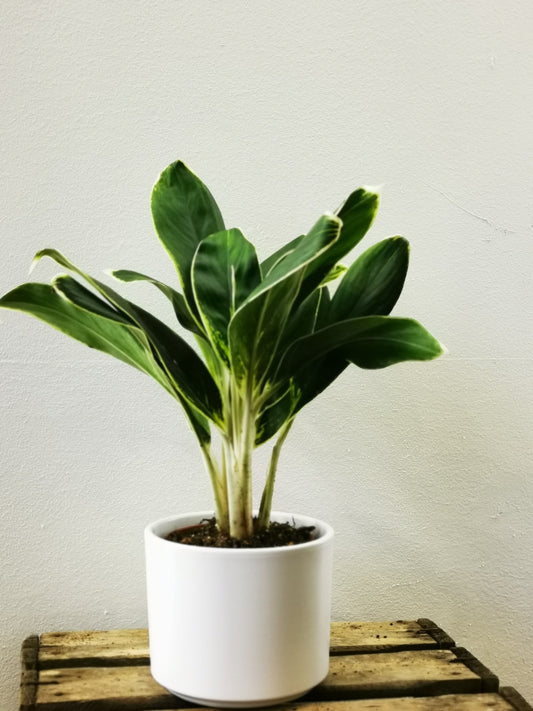
How to care for the Aglaonema
Share
Looking for a low-maintenance plant to add to your home? The Aglaonema, also known as the Chinese Evergreen, is a great option! This plant tolerates low light and doesn’t require much water. In our opinion, it’s the most underrated houseplant . Plus, it comes in a variety of colors, so you can find one that matches your decor. Read on to learn more about Aglaonema plant care!
By the way, you can find all our Aglaonemas here: Our Aglaonemas
Aglaonema General
The Aglaonema is a member of the Arum family and consists of more than 50 species. It may be nicknamed the 'Chinese Evergreen', but it mainly grows in Indonesia.
Aglaonema Species

The Aglaonema's that you will find with us are the following:
Aglaonema Crimson Love
Aglaonema White Lance Aglaonema Silver Bay
Aglaonema Crete
Aglaonema Green Lady
Aglaonema White Lady
Aglaonema Green Bay
Aglaonema Pink Star
If you are looking for another species, you can always contact us. We can order almost any plant in the world from the growers in Asia. You can contact us via email or social media.
Caring for the Aglaonema
Aglaonema and light
The Aglaonema does not like too much light. You can put it on a northern window, or a few meters away from a window where the sun comes through. Direct sunlight does not do the leaves any good and you should actually always avoid it. A good tip is to turn your Aglaonema a quarter turn every now and then, otherwise your plant will grow to one side. By turning it, you prevent a plant that is only beautiful on one side!
Watering Aglaonema
Houseplants like Aglaonema don't mind a little more or less water. They do hate having their roots standing in water though, so if you're not sure how much to give them, it's best to just wait and see!
You can water it by placing the pot in a dish and letting the plant suck up the water, or you can water it from above. In both cases it is strongly recommended to let it drip.
Is the Aglaonema poisonous?
In general, the Aglaonema is considered poisonous. The plant contains chemicals such as calcium oxalate crystals, which can be irritating when ingested or when in contact with the skin and mucous membranes. As a result, chewing or eating parts of the Aglaonema can lead to symptoms such as irritation of the mouth, throat and stomach in pets and children, which can result in salivation, vomiting and discomfort.
Common Situations with the Aglaonema
A thick ball forms on one of the stems (a flower)
Great! As a plant parent, that is a nice compliment. You can see it as a thank you from your plant. There are two options for the flower: you leave it or you cut it off. Flower fan? Fine, let it bloom. The plant will put all its energy into the flower and hardly any new leaves will grow.
Are you a fan of the leaves? Then you could cut off the flower. That way the plant puts all its energy into new leaves.
Pro tip: always check under the leaves to see if there is more than 1 flower. You might be shocked!
One of the leaves turns yellow
Leaves turning yellow can have several causes. Yellow leaves are a way your plant wants to communicate with you. So listen!!
If the lower leaves turn yellow and weak, you have not watered the plant often enough. This can happen after one too long dry period. Give your plant water and some recovery time and possibly cut away the yellow leaves with clean scissors or a sharp knife. When cutting, always keep the 'cut wound' as small as possible to prevent infections!
Are leaves turning yellow (and not necessarily the bottom ones)? Then your plant may have too much light. Try moving your plant a bit further away from the window and keep your plant out of the sun at all times!
The roots of my Aglaonema are coming out from under the pot
If you notice that your Aglaonema (Chinese Evergreen) has roots that are protruding from the bottom of its pot, it is important to take action quickly to maintain the health of your plant. Roots protruding from the pot can be a sign that your plant has outgrown its current pot, which can lead to root suffocation and stunted growth.
To address this issue, consider repotting your Aglaonema into a larger pot. Choose a pot that is approximately 2-5cm larger in diameter than the current pot. Make sure the new pot has good drainage holes to allow excess water to drain away, and use a quality potting soil that is suitable for houseplants.
Care should be taken when repotting to avoid damaging the roots. Carefully remove the plant from its old pot, shake off any excess soil from the roots, and place the Aglaonema in the new pot. Fill the rest of the space with fresh potting soil and press it down gently. Water the plant thoroughly afterwards. By following this process, you are giving your Aglaonema the space and nutrients it needs to grow healthy and happy.
What types are there?
These are the most common Aglaonemas, but there are more than this list contains.
- Aglaonema BJ Freedman
- Aglaonema Silver Queen
- Aglaonema Silver Moon
- Aglaonema Stripes
- Aglaonema Maria
- Aglaonema Chocolate
- Aglaonema Prestige
- Aglaonema Silver Queen
- Aglaonema Pink Dalmatian
- Aglaonema Red Valentine
- Aglaonema First Diamond
- Aglaonema Cutlass
- Aglaonema Sparkling Sarah
- Aglaonema Red Anjamania
- Aglaonema Bidadari
- Aglaonema Diamond Bay
- Aglaonema Modestum
- Aglaonema Green Papaya
- Aglaonema Green Sun
- Aglaonema Pink Spotted
- Aglaonema Super White
- Aglaonema Pink Moon
- Aglaonema Harlequin
- Aglaonema White Rain
- Aglaonema Prosperity
- Aglaonema widuri 'Red Peacock'
- Aglaonema Nitidum
- Aglaonema Silver King
- Aglaonema 'Suzy'
- Aglaonema White Lance
- Aglaonema Red Gold
- Aglaonema Pictum Tricolor
- Aglaonema Jubilee Compacta
- Aglaonema Maria Christina
- Aglaonema Golden Madonna
- Aglaonema Silver Bay
- Aglaonema Crete
- Aglaonema Green Lady
- Aglaonema White Lady
- Aglaonema Green Bay
- Aglaonema Pink Star






